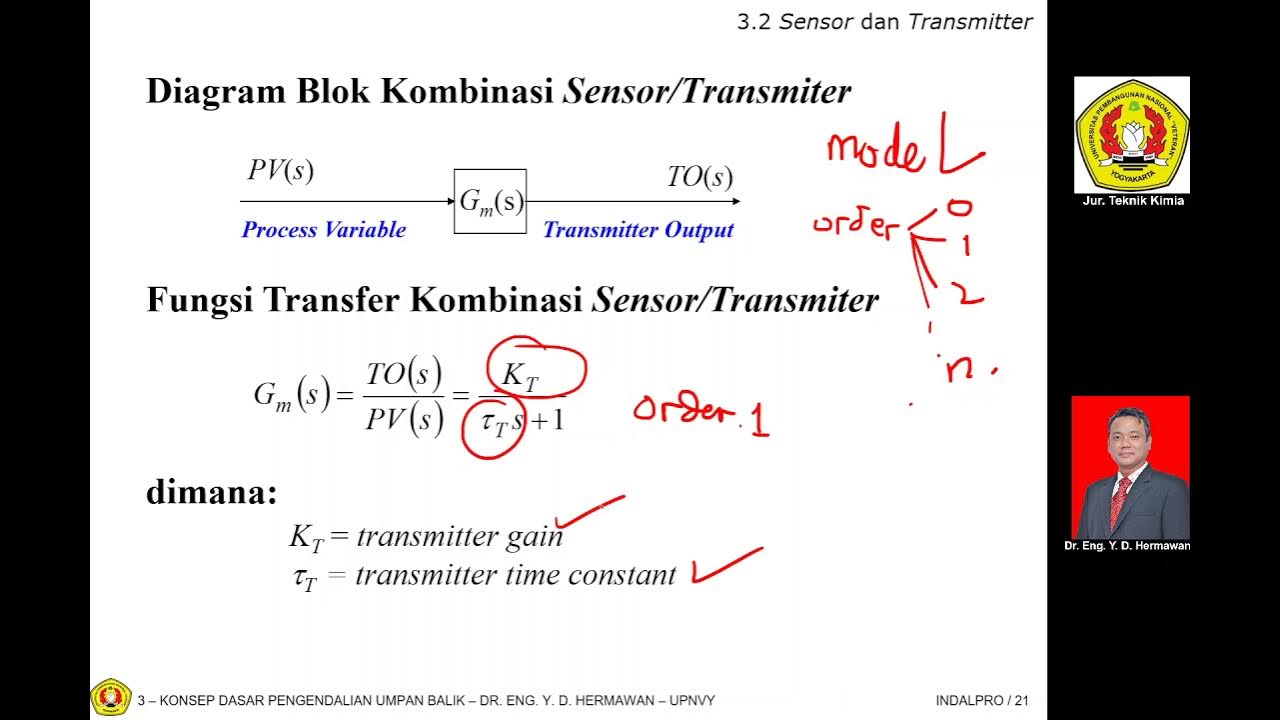DP Level Measurement Explained
Summary
TLDRThis video introduces the process of measuring fluid levels in vessels using a Differential Pressure Transmitter. It covers the two main categories of level measurement: point and continuous, with a focus on continuous measurement. The script explains how pressure at the bottom of a vessel is related to liquid height and the effects of variables like specific gravity and temperature. It demonstrates the use of a Differential Pressure Transmitter for indirect level measurement, while providing insights into converting pressure readings into various units. The video also offers an overview of additional learning resources.
Takeaways
- 😀 Level measurement can be categorized into two types: point level and continuous level sensors.
- 😀 Point level sensors detect a specific liquid height, while continuous level sensors measure fluid levels across a range from 0% to 100%.
- 😀 Continuous level sensors provide real-time measurements of liquid height within a vessel.
- 😀 A Differential Pressure Transmitter (DPT) can be used to measure vessel fluid levels by detecting pressure at the reference point of the vessel.
- 😀 Pressure at the bottom of a vessel varies with the liquid height, making it possible to determine the liquid level indirectly through pressure measurement.
- 😀 The reference or zero percent point for level measurement is not at the very bottom of the vessel to prevent complete draining.
- 😀 Variables such as specific gravity and temperature influence the accuracy of level measurements using a Differential Pressure Transmitter.
- 😀 Specific gravity (also called relative density) plays a key role in the relationship between pressure and liquid height in a vessel.
- 😀 The relationship between pressure, relative density, and liquid height can be expressed as: 'Pressure in inches of water = Relative density × Height of the liquid surface.'
- 😀 A Differential Pressure Transmitter is set up by connecting the high-pressure port to the zero percent point of the vessel, with the low-pressure port vented to the atmosphere.
Q & A
What are the two categories of level measurement mentioned in the video?
-The two categories of level measurement mentioned are 'point' and 'continuous'. Point level sensors are used to mark a specific liquid height, while continuous level sensors measure the fluid level within a measurement range.
What is the key difference between point level sensors and continuous level sensors?
-Point level sensors measure a specific liquid height, while continuous level sensors measure the fluid level over a full 0% to 100% range of a vessel.
How is the pressure at the bottom of a vessel related to the liquid level?
-The pressure at the bottom of a vessel is directly related to the liquid level. As the liquid height increases, the pressure at the base increases, allowing the level to be determined from the pressure measurement.
Why is the reference point for level measurement usually not at the very bottom of the vessel?
-The reference point is not at the very bottom of the vessel to ensure that the vessel is never completely drained. This helps maintain accurate level measurements and prevents damage or dry running of pumps.
What is the role of specific gravity in differential pressure level measurement?
-Specific gravity (or relative density) of the liquid has a major effect on the pressure at the reference point. It influences the relationship between pressure, liquid height, and liquid density, which helps in calculating the level of the liquid in the vessel.
How can the pressure at the reference point be converted into different pressure scales?
-The pressure at the reference point, calculated in inches of water, can be converted into various pressure units such as psi, kPa, bar, etc., using the appropriate conversion formulas.
What is the formula mentioned in the video to calculate pressure in inches of water?
-The formula for calculating pressure in inches of water is: 'Pressure in inches of water = Relative density of the liquid * Height of the liquid surface in inches'.
What is the high and low-pressure port configuration for measuring the level of an open vessel?
-For an open vessel, the High Pressure Port of the Differential Pressure Transmitter is connected to the 0 meters point (the reference point), and the Low Pressure Port is vented to the atmosphere.
What is the benefit of using a Differential Pressure Transmitter to measure vessel level?
-A Differential Pressure Transmitter can accurately measure the liquid level in a vessel by measuring the pressure at the reference point. This method is reliable and does not depend on the vessel's size or shape.
How can RealPars courses help someone interested in level measurement or industrial automation?
-RealPars offers online courses that cover topics like PLC programming and industrial automation. Newcomers can access the first lesson of the PLC Hardware course for free, and paid members get exclusive access to a wide range of high-quality courses and fresh weekly content.
Outlines

Этот раздел доступен только подписчикам платных тарифов. Пожалуйста, перейдите на платный тариф для доступа.
Перейти на платный тарифMindmap

Этот раздел доступен только подписчикам платных тарифов. Пожалуйста, перейдите на платный тариф для доступа.
Перейти на платный тарифKeywords

Этот раздел доступен только подписчикам платных тарифов. Пожалуйста, перейдите на платный тариф для доступа.
Перейти на платный тарифHighlights

Этот раздел доступен только подписчикам платных тарифов. Пожалуйста, перейдите на платный тариф для доступа.
Перейти на платный тарифTranscripts

Этот раздел доступен только подписчикам платных тарифов. Пожалуйста, перейдите на платный тариф для доступа.
Перейти на платный тариф5.0 / 5 (0 votes)






